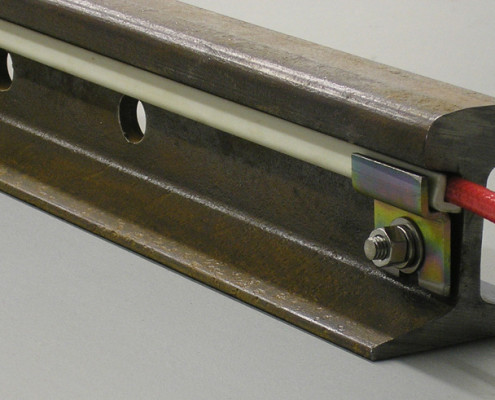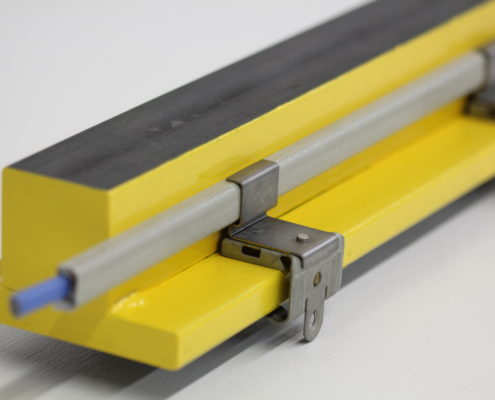Factory Crane Rail Heating
Moisture precipitating on indoor crane runways can cause dangerous wheel slippage during crane accelerating and/or braking. In wet processing and plating shops, the chemistry present in the air also precipitates on runways leading to severe wheel slippage to steel or polyurethane drive and braking wheels resulting in crane crashes, poor production performance and other issues. Adding to runway moisture and chemistry precipitation, manufacturing facilities that lack the proper volumes of makeup air to exhaust air from the plant, and a 35,000 lb. crane will spin its drive wheels, and slide when trying to stop as though it is on black ice.
To avoid dew point temperature issues and mitigate the problem, some companies have resorted to turning on the plant heating in the summer to change the temperature in the plant. This is very expensive and extremely tough on the employees! Our solution is to raise the steel runway temperature slightly above the dew point temperature (≈95° F to 100° F for most of North America) to eliminate any moisture precipitating on the rail and avoid the loss of crane wheel traction.
Thermal-Flex factory crane rail heating systems are comprised of industrial grade, high temperature constant wattage heating cables, thermostatic controls, and various types of components and mounting hardware for effectively heating the crane rail. The heating cable is secured with our high temperature fiberglass channel to both protect it and maximize heat transfer into the rail. The heating components can be fixed to the crane rail with a variety of methods including threaded studs, by drilling the rail, or clipping in place using the crane rail girder and other adjacent components.
Features
- Reliable Constant Wattage Heating Cable
- 240, 480, and 600 Volt Systems
- Heating Cable Wattage to 30 W/ft.
- Fiberglass Containment Channel
- Mounting Options with Threaded Studs and Brackets or Spring Steel Rail Clips
- Heating Designs for ASCE, Crane and Square Rail
- Thermostatic Controls and Sensors




